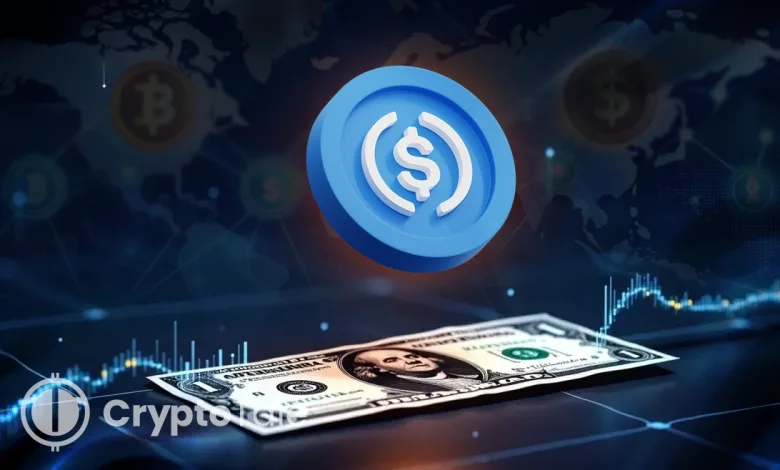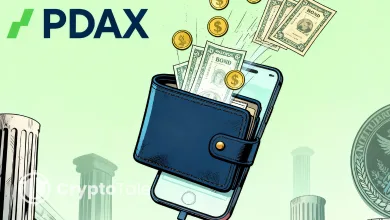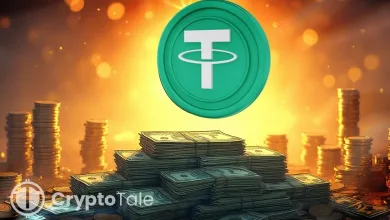Circle’s USDC Expands Into Banking With Mastercard & Finastra

- Circle partners with Mastercard and Finastra to expand USDC settlement across 50 nations.
- Finastra’s $5T daily payment system now integrates USDC, reshaping cross-border finance.
- Mastercard expands USDC access across Europe, the Middle East, and Africa networks.
What once began as an experiment in digital assets is now entering the banking mainstream. Stablecoins, often tied to the U.S. dollar, are being adopted as settlement tools in traditional financial networks.
This change became clearer after Circle partnered with Mastercard and Finastra, extending USDC, the world’s second-largest stablecoin, to more than 50 countries. The integrations show how blockchain-based money is moving from crypto exchanges into regulated financial infrastructure.
Circle Connects to Banking Giants
Finastra, a London-based fintech firm, provides payments infrastructure for major banks globally, and its platform, Global PAYplus, processes over $5 trillion in cross-border flows each day. The company announced it will now support USDC settlement through its system.
The integration allows banks to settle transfers in USDC while still sending instructions in traditional fiat currencies. The strategy will decrease reliance on the current networks of correspondent banking that prevail in cross-border transactions today. These networks are frequently criticized due to its slow speed, high cost, and low transparency.
Chris Walters, CEO of Finastra, stated that the partnership provides banks with new tools for innovation, and by connecting to Circle’s blockchain rails, banks can test and launch new models for payments without building separate infrastructure.
Circle CEO Jeremy Allaire pointed out that the partnership offers blockchain efficiency with the scale of the existing banking systems, and the integration enables financial institutions to execute faster and cheaper international transactions without compromising compliance.
Mastercard also recently expanded access to USDC settlement in its merchant network in Europe, the Middle East, and Africa, boosting USDC expansion beyond the crypto platforms to card payments and retail transactions. The two deals combined increase the influence of the stablecoin in mainstream finance.
Stablecoins Challenge Traditional Channels
Stablecoins like USDC are designed to maintain a one-to-one value with fiat currencies. They allow near-instant transactions, operate around the clock, and cut costs compared with traditional settlement systems.
Market forecasts show the sector is expanding quickly, as Coinbase recently projected the stablecoin market could reach $1.2 trillion by 2028. The growth will be driven by regulatory clarity and accelerating corporate adoption. USDC already has a circulating supply of more than $69 billion. With Circle’s partnerships, its reach is now tied directly to banking-grade infrastructure that powers trillions in daily flows.
The implications extend beyond convenience, as more banks and merchants use stablecoins to settle their debts, long-standing systems such as SWIFT may be under pressure. Such blockchain rails have the potential to challenge the existing channels by providing speed and efficiency unattainable by traditional systems.
Related: USDC on Ethereum Surges to $748B Monthly Transfers in July
Circle is also preparing its own blockchain called Arc, designed for payments. Earlier this month, the company reported that USDC circulation surged 90% year-on-year, reaching $65.2 billion by mid-August 2025. The firm also noted strong revenue growth following its June IPO, which raised $1.2 billion.
Despite reporting a quarterly net loss, Circle described the listing as a turning point. Allaire stated that institutional firms have expressed interest in stablecoin adoption, and as integration deepens, stablecoins may soon underpin more than just cryptocurrency markets and could be. tools for banks, retailers, and payment processors worldwide.
The shift demonstrates the exit of digital money out of the experimental phase. With the USDC embedded in the Mastercard merchant network and with Finastra’s $5 trillion daily flows, the realms of stablecoins are becoming part of mainstream finance.





